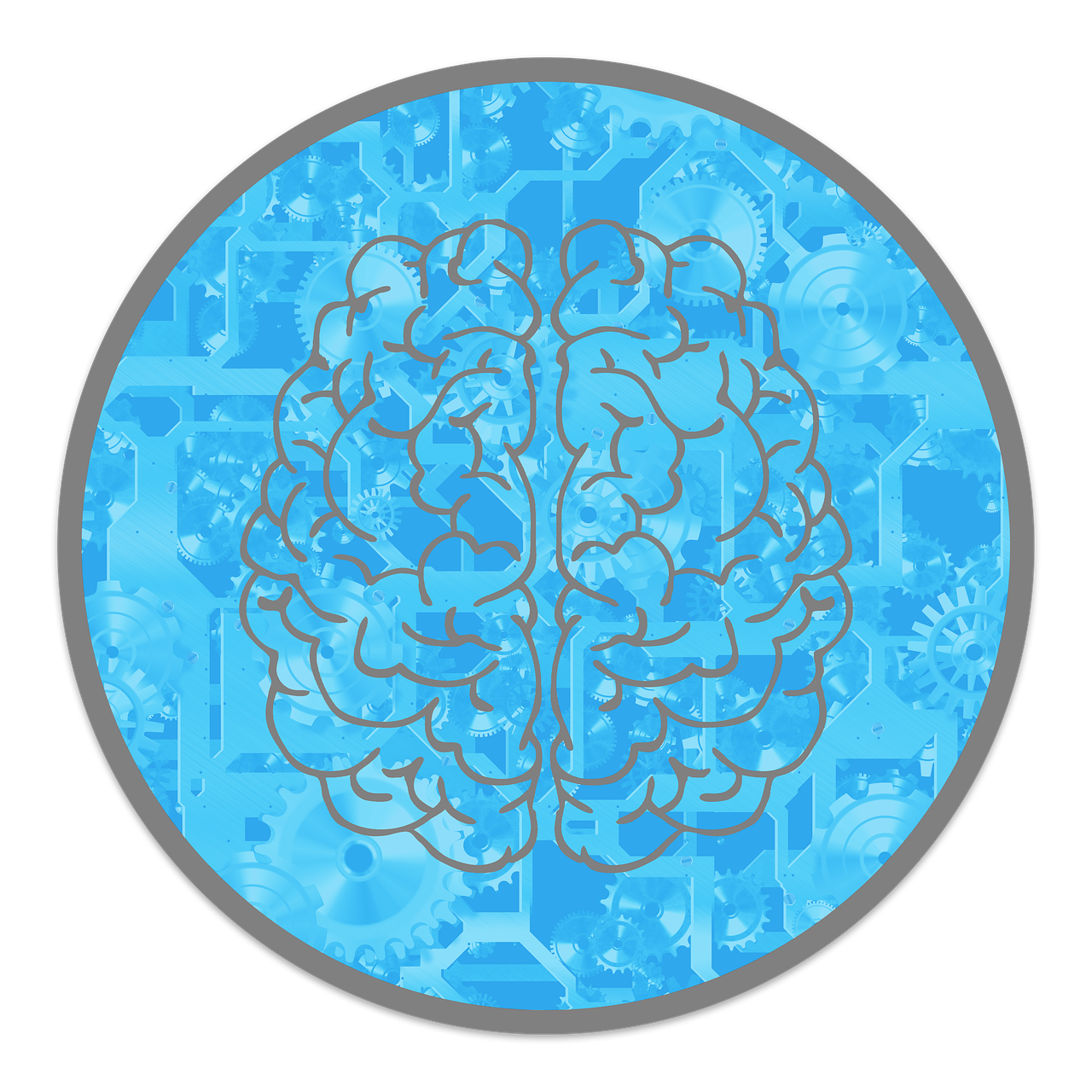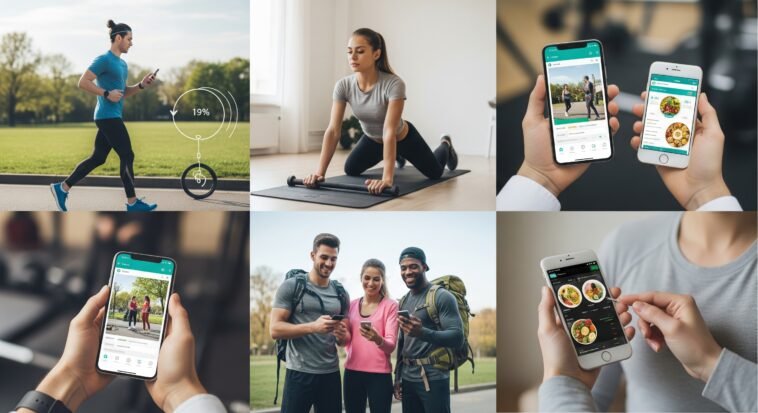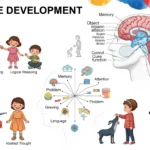
Most people quit the gym within 5 to 8 months—but fitness apps are flipping the script.
By mixing game-like features with smart psychology tricks, these apps keep users coming back.
That’s why the fitness app market is booming, with $55B growth expected by 2028.
The secret? Gamification and habit-forming tech that actually works.
Understanding Gamification in Fitness Apps
Fitness apps don’t just track steps—they play mind games (in a good way).
Gamification means using stuff from video games—like points, badges, and leaderboards—to make boring workouts feel fun and rewarding.
It works because people love goals, rewards, and a little friendly competition.
Points
Most apps give you points for workouts, steps, or sticking to your plan.
Apps like Strava, Nike Training Club, and MyFitnessPal use these scores to show you’re crushing it—even if it’s just a Tuesday jog.
Badges
Did your first 5K? Logged in for 30 days straight? Boom—here’s a badge.
These little rewards hit your brain’s “look at me” button. It’s like a sticker chart for grown-ups.
Leaderboards
Wanna beat your friend’s step count? Join a global challenge? Leaderboards tap into that part of your brain that says, “I have to win this.”
Suddenly, walking becomes a full-blown competition.
Progress Bars
Apps show your progress with graphs, bars, and streaks.
Seeing how far you’ve come makes you want to keep going.
It’s like watching XP stack up in a game—you don’t want to lose your streak.

The Science of Reinforcement in Fitness Apps
Gamification makes workouts fun—but reinforcement is what makes the habit stick.
Fitness apps use smart psychology tricks, like giving rewards and social boosts, to train your brain to crave that next workout.
Here’s how it works:
Positive reinforcement
Every time you finish a workout, your app throws you a party—fireworks, “You crushed it!” messages, maybe even new features.
That instant reward? It tells your brain, “Hey, let’s do that again.”
Random rewards
Some apps give you rewards at random instead of every single time.
It’s like gambling—but healthy.
You never know when you’ll unlock a badge or hit a milestone, so you keep showing up “just in case.”
Social shoutouts
Post your workout, and boom—likes, comments, virtual fist bumps.
That social approval feels good and keeps you coming back.
Community challenges? Even better. It’s fitness with peer pressure, but the good kind.
Smart apps that learn from you
Apps like CalFit and PAUL use AI to study your workout habits.
They tweak your goals, time your reminders, and suggest changes based on what works for you.
It’s like having a coach in your pocket who actually pays attention.
Popular Gamification Techniques Across Leading Fitness Apps
Fitness apps are sneaky smart. They use game tricks to make you show up, sweat, and stick with it.
Here’s how they keep you in the game—even when you’d rather chill.
Streaks
Do one workout, cool. Do two in a row, now you’ve got a streak.
Keep going, and suddenly you really don’t want to break it.
Apps use this loss-aversion trick so your brain’s like, “Nope, can’t miss today.”
Even if it’s 11:58 PM and you’re doing jumping jacks in your pajamas.
Challenges
Monthly goals, holiday-themed workouts, or “30-day burn” events make everything feel urgent.
It’s short, timed, and just competitive enough to get you moving—especially when everyone else is posting their sweaty selfies, too.
Levels
You start at level 1, grind your way up by working out, and unlock new stuff as you go.
Think of it like a fitness version of leveling up in a video game.
New workouts, badges, or fancy gear skins? All earned through sweat.
Coins, gems, and workout loot
Some apps give you virtual currency—like coins or gems—for crushing goals.
You can use that stuff to upgrade your avatar, unlock premium content, or even snag real rewards.
It’s like being paid to plank.

The Psychology Behind User Engagement
Fitness apps aren’t just about workouts—they mess with your brain in all the right ways.
They know how to keep you motivated, challenged, and part of something bigger.
Here’s the psychology behind the obsession:
Rewards vs real motivation
Apps give you points, badges, and coins—that’s extrinsic motivation (aka outside rewards).
But the best ones also help you actually enjoy working out.
That’s intrinsic motivation—doing it because it feels good, not just for virtual bling.
Great apps mix both, so you’re pumped now and later.
Flow state
Ever get so into a workout you forget what time it is? That’s the flow.
Good apps keep workouts just hard enough to stay fun—but not so hard you rage quit.
AI helps by adjusting stuff to your skill level.
Too easy = boring. Too hard = “delete app.” Just right = brain happy.
Fitness FOMO & community vibes
When your app connects you with a crew—challenges, chat groups, leaderboard squads—it stops being “just a workout” and becomes “what we do.”
You start seeing yourself as that person who runs, lifts, or crushes burpees.
And once it’s part of your identity, it sticks.
Challenges and Potential Drawbacks
Fitness apps are cool, but they’re not perfect.
Like any tool, they can backfire if you’re not careful. Here’s what to watch out for:
Too hooked on rewards
If you only work out for points or badges, what happens when the app glitches or you just stop caring about digital trophies?
Relying too much on rewards can kill your motivation once the fun wears off.
You’ve gotta find your why beyond the app.
Obsession over progress
Chasing streaks, crushing leaderboards, tracking every calorie—it can go from helpful to stressful real fast.
Some users push too hard just to stay on top, skipping rest days or ignoring their body.
That’s not fitness—that’s burnout.
Creepy data stuff
These apps track everything—workouts, sleep, mood, steps, even when you take breaks.
That data helps with personalization, sure.
But where does it go? Who sees it? Before you hit “accept all,” make sure you’re cool with how they handle your info.

The Future of Gamified Fitness
The future of fitness apps is basically sci-fi—but real.
Here’s what’s coming down the pipeline:
AI-powered personalization
Future apps won’t just track steps—they’ll learn you.
Like, “You skipped leg day again? Got it.” AI will adjust your workouts based on your mood, habits, and even your schedule.
It’s like having a personal trainer who actually knows when you had a rough week.
Virtual and augmented reality integration
Soon, workouts won’t just be push-ups in your living room.
You’ll be sword-fighting in VR or doing yoga on a virtual beach in AR.
It’s not just fun—it keeps you distracted from how much your legs hurt.
Biometric integration and real-time feedback
Smartwatches and wearables are just the start.
Future apps will track your heart rate, oxygen levels, and maybe even hydration, then tweak your workout in real-time.
Feeling tired? It’ll slow things down. Crushing it? Get ready to level up.
Final Word: Why Fitness Apps Work So Well
Fitness apps don’t just use tech—they use smart psychology.
By mixing game tricks with behavior science, they make workouts feel fun, rewarding, and way easier to stick with.
The best apps balance cool features with real habit change.
If you get how they work—points, streaks, rewards, motivation—you can pick the one that fits you.



